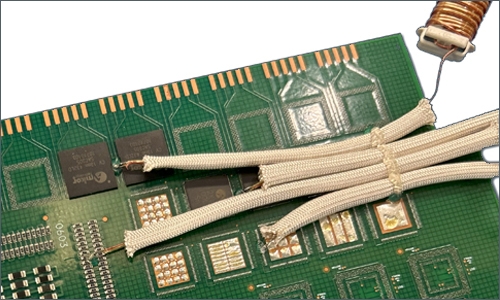I’m Dave Dworak, Material Scientist here at Dymax, and I’m excited to share a new white paper that highlights a major step forward in reflow profiling precision, something that’s extremely important to every process engineer in electronics manufacturing.
David Dworak, Dymax Material Scientist
The article, “Stuck on Precision: UV-Curable Adhesive Holds Thermocouples Tight for Accurate Reflow Profiling,” explores how Dymax 9037-F UV-curable adhesive is redefining how we attach thermocouples to printed circuit boards (PCBs). Conducted with testing through the Rochester Institute of Technology, we investigate how different thermocouple attachment techniques perform in demanding, high-density PCB applications. Adhesive bonding has long been a trusted method for securing components and reinforcing assemblies, so extending this technique to thermocouple attachment just makes sense.
What’s exciting are the results. This study shows that Dymax 9037-F UV-curable adhesive outperforms traditional methods like solder, aluminum tape, and polyimide tape in every key area—durability, accuracy, repeatability, and ease of use. That’s a big deal when you consider how critical precise thermal profiling is in today’s high-density, high-performance electronics.
Thermocouple Sleeves Secured with Adhesive
As we push the boundaries of miniaturization and complexity, we need solutions that are not only reliable but also ready for the future. Dymax 9037-F delivers on both fronts.
I encourage you to check out the full piece, which was recently published by WNIE and see how this innovation could elevate your process control. Contact us for more information on Dymax 9037-F.
Let’s keep pushing the limits of precision.
By sharing these results, Dymax continues its commitment to advancing materials that solve real manufacturing challenges, helping customers achieve greater reliability and precision in their electronic assemblies.
_________________________________________________________
Enjoying This Content? Let’s Stay Connected.
If you’re finding value in our insights, why not get more of it—delivered right to your inbox? Subscribe to receive the latest technical articles, white papers, product news, and expert tips.


